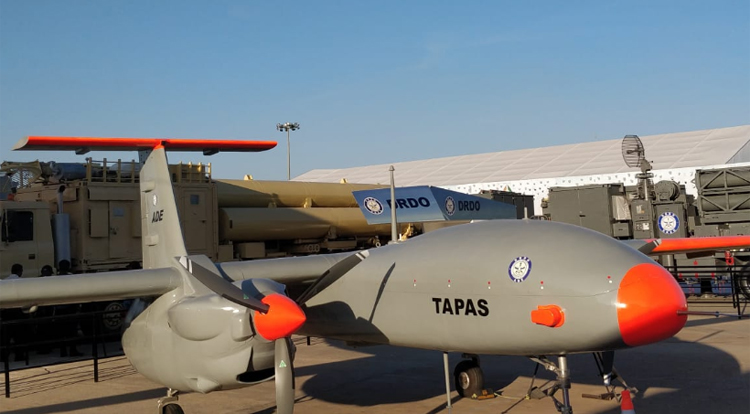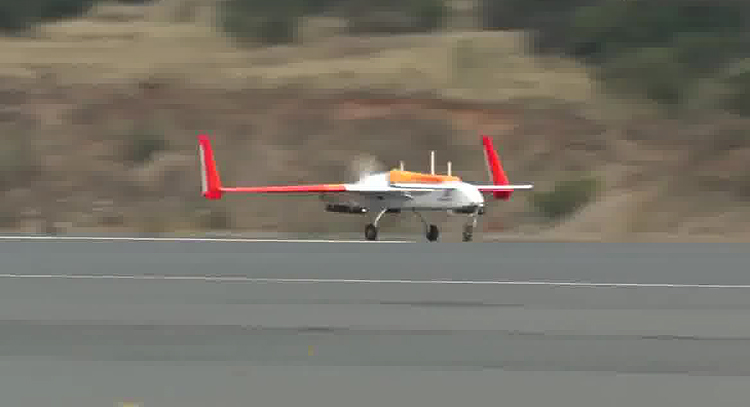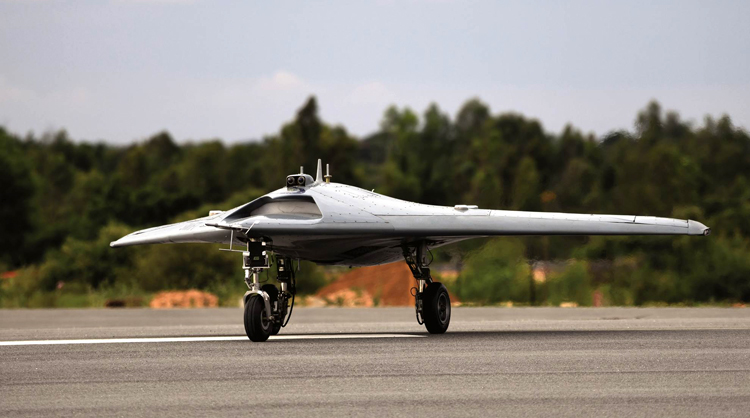INDIAN ARMED FORCES CHIEFS ON OUR RELENTLESS AND FOCUSED PUBLISHING EFFORTS

The insightful articles, inspiring narrations and analytical perspectives presented by the Editorial Team, establish an alluring connect with the reader. My compliments and best wishes to SP Guide Publications.

"Over the past 60 years, the growth of SP Guide Publications has mirrored the rising stature of Indian Navy. Its well-researched and informative magazines on Defence and Aerospace sector have served to shape an educated opinion of our military personnel, policy makers and the public alike. I wish SP's Publication team continued success, fair winds and following seas in all future endeavour!"

Since, its inception in 1964, SP Guide Publications has consistently demonstrated commitment to high-quality journalism in the aerospace and defence sectors, earning a well-deserved reputation as Asia's largest media house in this domain. I wish SP Guide Publications continued success in its pursuit of excellence.
Indigenous Tapas-BH & Archer-NG Drones
Induction of these indigenous drones will give a tremendous boost to the combat potential of our Armed Forces. These would fall much cheaper and cut drone import costs drastically.
 |
The Author is Former Director General of Information Systems and A Special Forces Veteran, Indian Army |

The ‘Tapas-BH’ drone (earlier called Rustom-2) showcased at Aero India 2023 is India’s first indigenous advanced unmanned aerial vehicle (UAV) for strategic reconnaissance and surveillance. The Tapas-BH (tactical aerial platform for advanced surveillance-beyond horizon) drone, developed by the Defence Research and Development Organisation (DRDO) had already clocked over 180 flights before it live-streamed the aerial and static display of multiple aircrafts during the Aero-India show at Bengaluru.
With a wing span of 20.6 metres and command range of 1,000 km, Tapas-BH has a maximum speed of 225 km/h. Equipped with satellite-based communications and having night flying capability, it is capable of operating at altitudes up to 28,000 feet with endurance of over 18 hours. The media has quoted an unnamed Ministry of Defence (MoD) official, saying that this medium-altitude long-endurance (MALE) is DRDO’s solution to meet the intelligence, surveillance, target acquisition and reconnaissance (ISTAR) requirements of the Army, Indian Air Force (IAF) and the Navy.
Indian Navy is interested in the UCAV project, and is keen on acquiring deck based UCAVs for future aircraft carriers and Landing Platform Docks (LPD)
The DRDO’s Aeronautical Development Establishment (ADE) has been developing Tapas-BH on the lines of General Atomics MQ-1 Predator UAV. The project commenced at the cost of 1,540.74 crore but was revised to 1,786 crore in 2022. Tapas-BH 201 had a successful maiden flight on November 16, 2016 at Challakere, 200 km away from Bengaluru in Karnataka where it was tested for takeoff, landing and other parameters. More advanced prototypes of the UAV then followed. Now Tapas-BH is getting ready for formal user-trial evaluation by the Armed Forces which are likely to be completed by August 2023. Thereafter, it would go for production in large numbers by Hindustan Aeronautics (HAL) in conjunction with Bharat Electronics (BEL) and some other entities.

Another significant development is the indigenous armed drone or the unarmed aerial combat vehicle (UCAV) named ‘Archer-NG’ (next generation) which according to the media would be flight tested for the first time during June-July 2023. Archer-NG can reportedly carry 300 kg of weapons including smart anti-airfield weapons (SAAWs) and anti-tank guided missiles. The Archer-NG, with several more hard-points for weapons carriage, also draws a lot in design from the Tapas-BH.
Though no details have been made public, Archer-NG is perhaps an advanced version of the UCAV ‘Ghatak’ which has been under development by the DRDO for some years. Project Ghatak was initiated by DRDO’s ADA in consultation with the IAF and is aimed at developing a stealth UCAV based on flying wing design. The Ghatak UCAV is projected to weigh less than a fighter jet and is intended to be powered by a 'dry engine' derivative of the GTRE GTX-35VS Kaveri turbofan engine capable of producing a thrust of 52 kN.
Given the China-Pakistan anti-India nexus, any war in this region would likely witness extensive use of drones
Development of a scaled down technology demonstrator of Ghatak UCAV, called ‘Stealth Wing Flying Test-bed’ (SWiFT), began in 2020. Ground trials of SWiFT UAV began in June 2021. It has a length of four metres, wingspan of five metres, weighs around one ton, and it uses a NPO Saturn 36MT or TRDO-50 MT turbofan engine. The SWiFT UAV took its maiden flight on July 1, 2022. According to DRDO, the drone exhibited a perfect flight, including take-off, way-point navigation and a smooth touchdown while operating in a fully autonomous mode.The Indian Navy is also interested in the UCAV project, and is keen on acquiring deck based UCAVs for future aircraft carriers and Landing Platform Docks (LPD).

The capability of drones and AI-enabled drone swarms in the battlefield has been exhibited in the Armenia-Azerbaijan conflicts (where employment of drones was more by Azerbaijan) to both sides using large number of drones in the ongoing war in Ukraine where the US-NATO are using Ukraine as a proxy to fight Russia. China has an extensive drone industry and the PLA is equipped with a large number of UAVs and UCAVs. China has supplied armed Cai Hong-4 and Wing Loong-II drones to Pakistan and Pakistan is also actively negotiating with Turkiye to procure Turkish drones and collaborate in joint production. Given the China-Pakistan anti-India nexus, any war in this region would likely witness extensive use of drones.
India is in an advanced stage of negotiations with the US to procure 30 x MQ-9B Predator armed drones at a cost of over $3 billion
India has procured a large number of Heron and Searcher-II drones from Israel over the years. The Navy also has two unarmed MQ-9B Sea Guardian drones on lease from the US firm General Atomics. India is also in an advanced stage of negotiations with the US to procure 30 x MQ-9B Predator armed drones at a cost of over $3 billion (24,000 crore for our Armed Forces. The MQ-9B drone is a variant of the MQ-9 Reaper which was used to launch a modified version of the Hellfire missile to kill Al Qaeda leader Ayman al-Zawahiri. But the high cost of 24,000 crore for 30 x MQ-9B Predator has led to a rethink of the numbers to be imported.
Induction of the indigenous Tapas-BH and Archer-NG drones will give a tremendous boost to the combat potential of our Armed Forces. These would fall much cheaper and cut drone import costs drastically. The Tapas-BH, which presently flies with a foreign engine, costs around 40-45 crore with all its mission sensors. However, the indigenous UAV engine is reportedly also now ready and in an advanced stage of evaluation. An indigenous advanced ground control station can operate six to seven home-grown UAVs. We need to mass produce indigenous UAVs and UCAVs together with requisite numbers of ground stations at the earliest.





